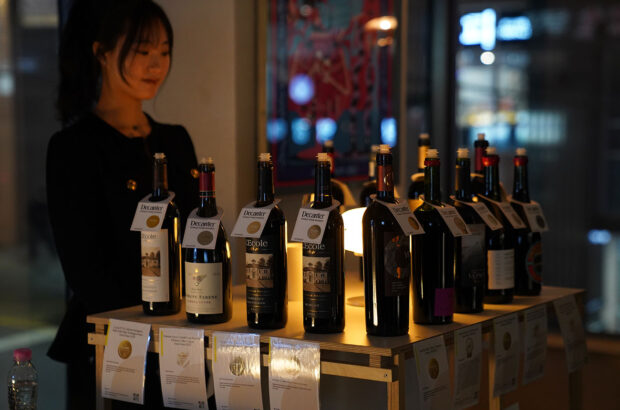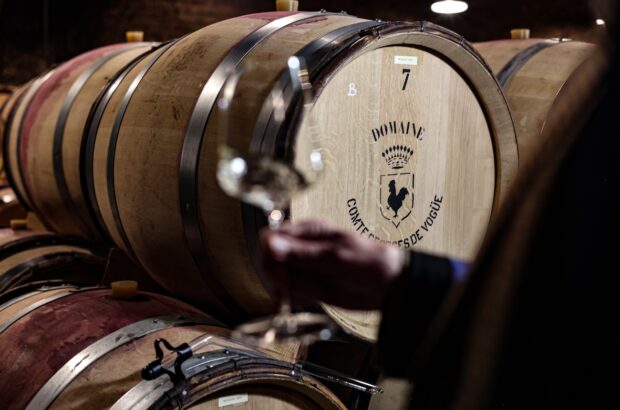You might find yourself looking at a supermarket shelf lined with bottles of Prosecco – as one does – to find that some are labelled as frizzante (plural, frizzanti) and others as spumante (plural, spumanti). Are they any different? Are they both in fact Proseccos?
They certainly can be. But they are indeed different, with each term denoting certain technical and stylistic characteristics.
Frizzante (fizzy) and spumante (sparkling) are Italian terms for sparkling wines with different levels of effervescence, i.e. with a different amount and strength of dissolved carbon dioxide (released in the form of bubbles when the bottle is opened). Wines labelled as frizzanti are only gently sparkling, while spumanti wine has significantly more pressure and bubbles.
Although regulations can vary slightly within each PGI or DOC, general regulations – harmonised across the EU for analogous terms – are as follows:
- Frizzante wines have between 1 and 2.5 bars of pressure at 20˚C. They are, by law, defined and referred to as semi-sparkling, and classified and taxed as still wines. Frizzanti can be released to market on crown cap.
- Spumante wines have a minimum of 3 bars of pressure at 20˚C. For quality sparkling wine, for example, one with a PDO or DOC, the minimum pressure is 3.5. (Note that most quality sparkling wines – such as Franciacorta, champagne or crémant – are sold with a pressure of between 5 and 6 atmospheres). Spumanti need to be released to market under cork and cage due to safety requirements (crown caps would not safely hold the pressure).
How is frizzante made
The amount of fizz in a sparkling wine is determined by the winemaking method and the amount of sugar added for the secondary fermentation, if there is one (more on that below). The latter will affect the amount of sugar that the yeasts consume during alcoholic fermentation, producing alcohol and carbon dioxide that is trapped inside the wine. This is released when the bottle is opened, producing those delightful bubbles.
By controlling the length of the fermentation or refermentation, either in vat or bottle, winemakers can condition the final style of wine – the longer the fermentation (i.e. the more sugars consumed and more carbon dioxide released), the more bubbles the final wine will have.
Controlled refermentation
Frizzante wines are most commonly a result of second fermentation in tank, in what is called the charmat method. This is the process used for most Proseccos and, by arresting fermentation before all the sugar is transformed into alcohol, a less fizzy and sweeter wine can be produced.
If this refermentation happens in bottle – as per the traditional method – we have what is called a ‘Rifermentato in bottiglia’. These are often a bit cloudy given that the remaining dead yeasts are still in suspension inside the bottle – like in an undisgorged champagne. The increasingly popular Prosecco Col Fondo is produced this way.
In one go
Instead of a second fermentation, effervescence can be a result of a single fermentation completed in bottle – the méthode ancestrale (ancestral method) of pétillant naturel fame. This effectively entails the conclusion of the first alcoholic fermentation – partially done in a fermentation vessel and temporarily suspended (usually by cooling the liquid) – after the wine is bottled, to then trap some carbon dioxide during the conclusion of the process. These wines are also often left undisgorged (sui lievitti) and sold under crown cap. Prosecco Col Fondo can also be produced this way.
Moscato d’Asti, on the other hand, relies on a partial alcoholic fermentation performed under pressure, in tank, so that carbon dioxide is not lost. Once alcohol level reaches 5%abv, the liquid is chilled and filtered to remove the yeasts, thus producing a slightly fizzy wine with the natural sweetness of the unfermented sugar.
Carbonation
In the case of carbonation, winemakers simply need to control the amount of carbon dioxide artificially added to the wine to achieve the desired frizzante style.
Styles and regions to look out for:
– Prosecco DOC – although most Proseccos fall under the spumante category (and all those at DOCG level are required to be fully sparkling, unless they are Col Fondos), there are Prosecco Frizzanti and Prosecco Col Fondo
– Emilia-Romagna – Lambrusco
– Piedmont – Moscato d’Asti (taste an Asti Spumante alongside to fully understand the difference in fizz levels); Barbera Frizzante; Freisa d’Asti
– Oltrepò-Pavese – Barbera Frizzante
When to drink frizzante
Frizzanti are inherently drinkable and enjoyable, making for ideal aperitifs and party crowd pleasers. But they are also versatile food companions, due to their subtle fizz and – especially in the rifermentato, sui lieviti iterations – incredible texture. Lambrusco with cheese, charcuterie and/or pizza is a classical pairing, but try also a Moscato d’Asti with roast chicken or sushi, a Prosecco Col Fondo with grilled prawns or a chilled Barbera Frizzante with barbecued meat and/or vegetables.
And does the level of fizz change the flavour of the wine itself? Strictly speaking, the amount of carbon dioxide does not affect a wine’s flavour. It can, however, affect our perception of aroma and flavour compounds. On the other hand, frizzante is generally intended as a fresh, openly aromatic, fruit-driven style, markedly different from traditional method sparkling (such as Champagne or Franciacorta) in which secondary and tertiary aromas, derived from winemaking and ageing, tend to predominate. Frizzanti tend to be made from grapes with a distinct varietal flavour profile, purposefully kept through the production process, making them usually very tasty wines.
What is frizzante called outside Italy
Semi-sparkling styles are, of course, not exclusive to Italy.
Here is a brief breakdown of the styles and nomenclature in other countries:
– Spain – as vino de aguja – Txakoli, from the Basque country, produces great examples, with incredible mineral drive and salinity.
– Portugal – as vinho frizante – Vinho Verde is the quintessential example, producing gently prickly wines, both white and red, ideal for summer drinking. But the country is also producing exciting pet-nats, especially in the Tejo and Lisboa DOCs.
– France – as vin pétillant – gently fizzy Muscadet is an absolute classic, perfect alongside an oyster platter.
– Germany – as perlwein.
And of course Pét-nat (pétillant naturel), in France and beyond, has had an exciting comeback, now featuring in wine bars across the globe.







